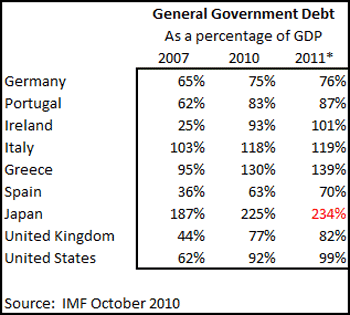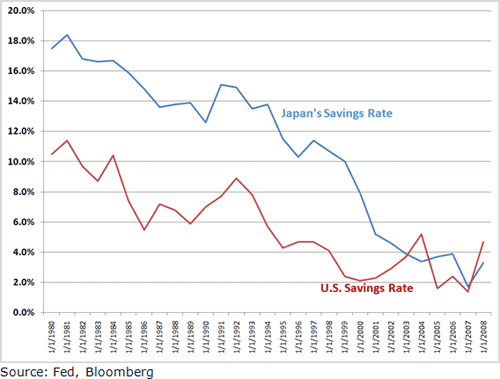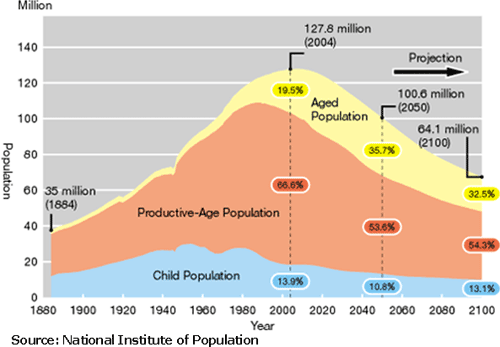Why Japan Needs a Weaker Yen, and How You Can Play It
Currencies / Euro Jan 30, 2011 - 10:46 AM GMTBy: Bryan_Rich
 Standard & Poor’s downgraded Japan’s sovereign debt rating this week. It was the first cut in Japan’s rating in nine years. Japan now joins Greece, Ireland, Portugal, Spain — all of which have been downgraded in the past twelve months; hardly the kind of company a country wants to keep.
Standard & Poor’s downgraded Japan’s sovereign debt rating this week. It was the first cut in Japan’s rating in nine years. Japan now joins Greece, Ireland, Portugal, Spain — all of which have been downgraded in the past twelve months; hardly the kind of company a country wants to keep.
I’ve said many times that in a world mired in debt and deficits, it’s only a matter of time until Japan has its turn under the spotlight of global scrutiny. And with this downgrade, it could be sooner rather than later.
Of course, there’s been no shortage of scrutiny toward the U.S. fiscal situation, given the massive policy responses to the financial and economic crisis. There’s been speculation of imminent bond market collapse, hyperinflation and an exit of the dollar — so far, none of it has happened.
In Europe, however, the chatter has already turned into crisis, as bond market vigilantes have expressed their view on the unsustainable sovereign debt situation in Europe through a mass exodus. Now the European Central Bank and the European Financial Stability Fund has become the lender of last resort to keep the ailing euro-zone members breathing.
But Japan could make the sovereign debt crisis in Europe look like the opening act …
Japan’s massive debt load is well known. As shown in the chart below it’s expected to reach twice the size of its economy for the second year running — double what the Bank of International Settlements (BIS) considers a frightening level of government debt.

That’s far and away the largest debt load of any economy in the world, except Zimbabwe. And it’s only expected to get worse. In fact, according to the International Monetary Fund, Japan’s government debt will reach a whopping 246 percent in 2014.
But any questions about the sustainability of Japan’s debt situation, regardless of how bloated it is, always tend to be dismissed with this explanation: Japan can continue to bury itself in debt because the Japanese citizens and private sector hold the lion’s share of Japanese government debt … i.e. they fund themselves.
To me, it looks highly unlikely that this dynamic can continue, based on three fundamental hurdles in Japan …
Fundamental Hurdle #1 — Declining Savings Rate
Japan has historically been a nation of savers. The savings rate in the 80s and early 90s had been steadily over 10 percent, higher than any other developed country. That has allowed the Japanese government to sell nearly all of its bonds to its citizens and institutions … to the tune of 94 percent of total outstanding public debt.
But since Japan’s economy went into stagnation in the 90s and given that interest rates for 15 years have hovered around zero, the savings attitudes in Japan have shifted. In fact, the savings rate is now lower than in the U.S. — a nation considered grossly addicted to spending, not saving.
Here’s the chart on personal savings in Japan and the U.S. …

Now, look at the next chart, and you’ll see …
Fundamental Problem #2 — Declining Population
While savings rates have been declining in Japan, so has its population, putting more pressure on the absolute quantity of savings. And it’s expected to get worse. The projection for Japan’s population shows a big fall over the coming decades due to its ageing demographic.

And finally there’s …
Fundamental Problem #3 — Non-Competitive Interest Rates
With debt expected to keep growing and revenues and savings expected to decline, Japan will have to turn to the international markets to find buyers of its debt to keep its economy breathing.
But there’s a problem with that scenario: Japan’s interest rates don’t remotely match the risk!
Japan’s 10-year debt pays just 1.2 percent. Apparently that’s enough for loyal Japanese investors. But that won’t cut it for attracting international capital. Debt in other competitive advanced economies, like Europe and the U.S. are nearly three times that rate right now.
What’s the investment play here? I think we’ll see a significant fall in the Japanese yen.
A weaker yen may not be the solution, but it’s certainly the clearest move Japan can make toward managing this crisis.
The easiest way to participate in a falling yen is through the ProShares UltraShort Yen ETF (symbol YCS). This ETF is designed to gain 2 percent for every 1 percent fall in the value of the Japanese/U.S. dollar exchange rate.
Regards,
Bryan
This investment news is brought to you by Money and Markets. Money and Markets is a free daily investment newsletter from Martin D. Weiss and Weiss Research analysts offering the latest investing news and financial insights for the stock market, including tips and advice on investing in gold, energy and oil. Dr. Weiss is a leader in the fields of investing, interest rates, financial safety and economic forecasting. To view archives or subscribe, visit http://www.moneyandmarkets.com.
© 2005-2022 http://www.MarketOracle.co.uk - The Market Oracle is a FREE Daily Financial Markets Analysis & Forecasting online publication.



